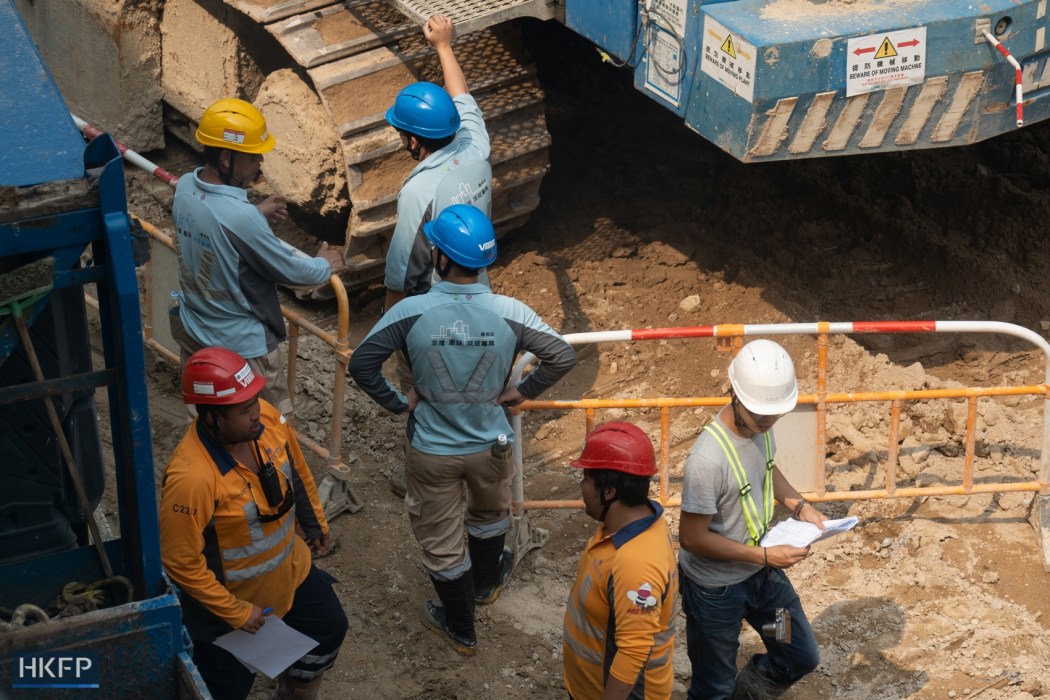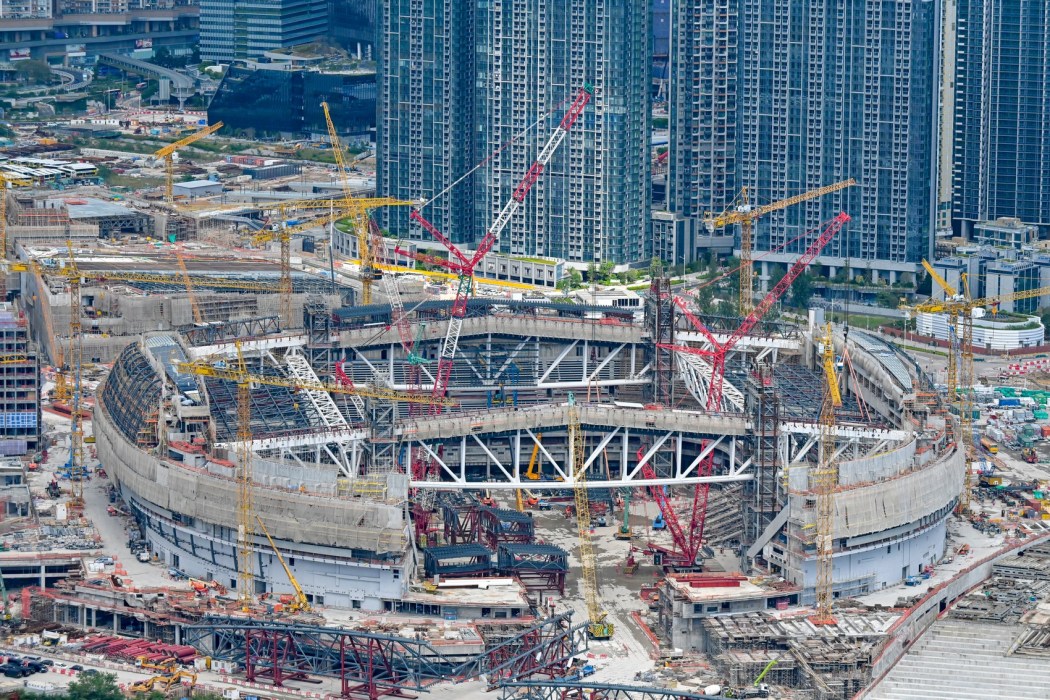Hong Kong is set to import around 20,000 workers in a bid to alleviate the labour crunch in the construction, transport and aviation sectors, the government has announced. But labour groups have criticised the plan as bypassing scrutiny of union leaders and ignoring the concerns of local workers.

The city’s construction sector may hire up to 12,000 non-local workers, Hong Kong officials announced on Tuesday, as part of the government’s latest move to deregulate labour importation to ease manpower shortfalls in the city. Applications could begin as early as July.
Employers would need to pay HK$400 a month as a retraining fee for each imported worker, while the authorities would give priority to applications related to large-scale public projects. Employers must also ensure that they maintained a ratio of at least two local workers to every imported labourer.
The government said taking into account the housing shortage in Hong Kong, non-local workers permitted under the scheme must reside at designated premises, such as temporary housing at the construction site. The authorities would also turn the Covid-19 quarantine facility in Tam Mei, in Yuen Long, into a central dormitory managed by the Construction Industry Council.
The transport sector can import up to 8,000 workers, while a quota of 6,300 workers was allocated to the aviation industry. The remaining 1,700 spots would be used to bring in 900 minibus drivers and 800 coach drivers.

“We would like to emphasise that importing labour is just one of the many approaches being taken. The government and relevant industries should still make effort to enhance training and encourage the adoption of innovative technology,” Secretary for Development Bernadette Linn said at a press conference on Tuesday.
The announcement of the new imported labour scheme came as the government said the city’s peak labour force had dropped from 3.68 million in 2018 to 3.46 million last year. The low-skilled labour force fell by around 160,000 people, Secretary for Labour and Welfare Chris Sun said.
“Therefore, after the return to normalcy, many industries in Hong Kong are facing the challenge of labour shortages,” he said.
According to Deputy Financial Secretary Michael Wong, the new scheme would not be open to mainland Chinese workers only. But “past experience” showed that most applicants would be from across the border due to geographical proximity and convenience, he said.

Wong also said the scheme had no time limit, but the government would treat it as a “non-permanent” measure. The government did not expect the gap between labour supply and demand to be completely filled by non-local workers, he said, adding that the authorities hoped more domestic labour would join the relevant industries.
“If the time limit is too short, then that is not realistic. But if it is too long, then it is rather meaningless,” Wong said at the press conference on Tuesday.
The government also announced it would suspend regulating over 26 occupations including hairstylists, waiters and cashiers, which would normally reject applications from non-local workers.
The regulations would be halted for two years, as the authorities said labour shortage issues were affecting different industries, and such rules were no longer applicable.

The Hong Kong General Chamber of Commerce (HKGCC) welcomed the plan on Tuesday, saying that its members believed recruiting talent from the Greater Bay Area – a megalopolis of Hong Kong, Macau and nine cities in mainland China – was the best short-term resolution to the city’s labour shortfall issue.
It also backed the government’s principle of prioritising domestic labour and enhancing training and support for local workers. Such a pragmatic approach would help protect the employment security of the local workforce, the chamber said.
“The move to import labour will go a long way to restore Hong Kong’s prosperity in post-pandemic times, and it is hoped that the announced measures will eventually be further relaxed and extended to other sectors facing manpower shortages,” the HKGCC said in a statement released on Tuesday.
But the plan was criticised by both the pro-Beijing labour and political group the Hong Kong Federation of Trade Unions (HKFTU) and the pro-democracy Democratic Party, which said it amounted to “circumventing” the Labour Advisory Board. The non-statutory body, comprised of major employer associations and employee representatives appointed by the chief executive, is responsible for monitoring the Supplementary Labour Scheme and vetting applications for importation of labour.
Under the existing mechanism, the board would give priority to hiring workers in Hong Kong and grant entry to foreign workers to take up jobs that could not be filled locally.

“What is even more infuriating is that the government intentionally bypassed the existing mechanism for importing labour,” the HKFTU said in a statement issued on Tuesday.
“It removed all regulatory mechanisms and eliminated the role of the Labour Advisory Board… it disregarded the interests of stakeholders, and violated principles of fairness,” the pro-establishment party added.
Last month, the Hong Kong Construction Industry Employees General Union published the results of a survey which found more than 80 per cent of local construction workers disagreed with moves to import foreign labour. Its chairperson claimed that the labour shortage was just an “illusion.”
Kelvin Sin of the Democratic Party described the plan as a move to import a large group of workers from mainland China, saying it would “seriously slant towards the business sector.” He also criticised the government for not disclosing statistics on labour shortage for the 26 deregulated jobs.
“When there are tens of thousands of applications, does the government have enough resources to strictly scrutinise each case?” Sin asked.
“The Democratic Party is totally against importing foreign labour, but the government must clearly explain different statistics to the public, as well as the manpower needs and situation of various industries,” he added.
Support HKFP | Policies & Ethics | Error/typo? | Contact Us | Newsletter | Transparency & Annual Report | Apps
Help safeguard press freedom & keep HKFP free for all readers by supporting our team

LATEST FROM HKFP
HKFP has an impartial stance, transparent funding, and balanced coverage guided by an Ethics Code and Corrections Policy.
Support press freedom & help us surpass 1,000 monthly Patrons: 100% independent, governed by an ethics code & not-for-profit.










